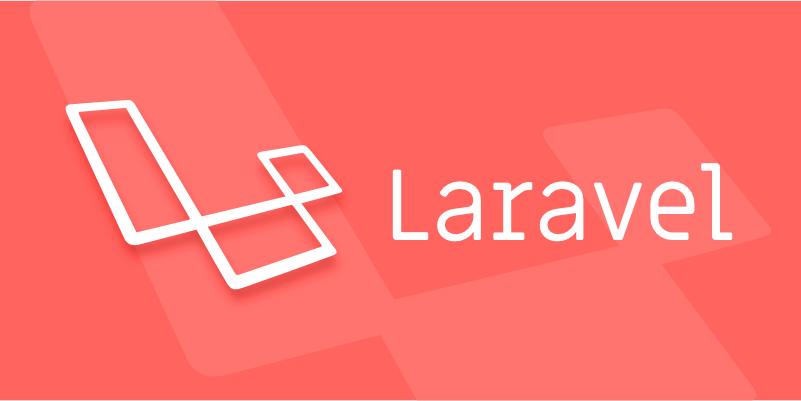In Laravel, events and listeners decouple application logic by allowing actions to be handled separately. Events signal that something has happened, such as a user registering, while listeners react to those events, like sending a welcome email. 1. You create events using php artisan make:event UserRegistered. 2. Listeners are created with php artisan make:listener SendWelcomeEmail --event=UserRegistered. 3. In the EventServiceProvider, you map events to listeners in the $listen array. 4. Events are dispatched using event(new UserRegistered($user)) or Event::dispatch(). 5. Benefits include cleaner code, reusability, scalability, and support for queued listeners to improve performance by handling tasks asynchronously.

In Laravel, events and listeners are part of a system that allows you to decouple various parts of your application. Instead of writing all logic in one place, like a controller, you can "fire" an event when something happens (like a user registering), and then have one or more listeners react to that event.

This makes your code cleaner and easier to maintain because different actions can be handled separately without cluttering the main logic.
What Are Events?
An event is a signal that something has happened in your application. For example, when a user registers, you might fire a UserRegistered event. This doesn't do anything by itself — it's just a way to announce that a specific action has taken place.

You can generate an event using Artisan:
php artisan make:event UserRegistered
This creates a new class in app/Events. You can pass data to the event (like the user object) and use it in any listener that reacts to it.

What Are Listeners?
A listener is a piece of code that waits for a specific event and then performs an action when it hears that event. For instance, after a UserRegistered event is fired, a listener might send a welcome email or log the registration.
You can create a listener with:
php artisan make:listener SendWelcomeEmail --event=UserRegistered
That will create a listener in app/Listeners and automatically wire it up in the EventServiceProvider.
How Do They Work Together?
The magic happens in the EventServiceProvider. In its $listen array, you define which listeners should respond to which events.
Here’s what it might look like:
protected $listen = [
'App\Events\UserRegistered' => [
'App\Listeners\SendWelcomeEmail',
'App\Listeners\LogUserRegistration',
],
];When the UserRegistered event is dispatched, both SendWelcomeEmail and LogUserRegistration listeners get called.
To dispatch an event somewhere in your app, like in a controller, you’d write:
event(new UserRegistered($user));
Or using the Event facade:
Event::dispatch(new UserRegistered($user));
Why Use Events and Listeners?
- Separation of concerns: You keep your controllers and models clean.
- Reusability: You can reuse listeners across multiple events.
- Scalability: As your app grows, it's easier to manage logic spread across events and listeners.
- Queue support: Listeners can be queued to run in the background, improving performance.
For example, sending a welcome email doesn’t need to block the registration process. By queuing the SendWelcomeEmail listener, the user gets a faster response while the email is sent behind the scenes.
Basically, events and listeners give you a structured way to handle side effects in your application without mixing them into your core logic. It's not complicated, but it does take a bit of setup and planning to use effectively.
The above is the detailed content of What are events and listeners in Laravel?. For more information, please follow other related articles on the PHP Chinese website!

Hot AI Tools

Undress AI Tool
Undress images for free

Undresser.AI Undress
AI-powered app for creating realistic nude photos

AI Clothes Remover
Online AI tool for removing clothes from photos.

Clothoff.io
AI clothes remover

Video Face Swap
Swap faces in any video effortlessly with our completely free AI face swap tool!

Hot Article

Hot Tools

Notepad++7.3.1
Easy-to-use and free code editor

SublimeText3 Chinese version
Chinese version, very easy to use

Zend Studio 13.0.1
Powerful PHP integrated development environment

Dreamweaver CS6
Visual web development tools

SublimeText3 Mac version
God-level code editing software (SublimeText3)
 Working with pivot tables in Laravel Many-to-Many relationships
Jul 07, 2025 am 01:06 AM
Working with pivot tables in Laravel Many-to-Many relationships
Jul 07, 2025 am 01:06 AM
ToworkeffectivelywithpivottablesinLaravel,firstaccesspivotdatausingwithPivot()orwithTimestamps(),thenupdateentrieswithupdateExistingPivot(),managerelationshipsviadetach()andsync(),andusecustompivotmodelswhenneeded.1.UsewithPivot()toincludespecificcol
 Sending different types of notifications with Laravel
Jul 06, 2025 am 12:52 AM
Sending different types of notifications with Laravel
Jul 06, 2025 am 12:52 AM
Laravelprovidesacleanandflexiblewaytosendnotificationsviamultiplechannelslikeemail,SMS,in-appalerts,andpushnotifications.Youdefinenotificationchannelsinthevia()methodofanotificationclass,andimplementspecificmethodsliketoMail(),toDatabase(),ortoVonage
 Understanding Dependency Injection in Laravel?
Jul 05, 2025 am 02:01 AM
Understanding Dependency Injection in Laravel?
Jul 05, 2025 am 02:01 AM
Dependency injection automatically handles class dependencies through service containers in Laravel without manual new objects. Its core is constructor injection and method injection, such as automatically passing in the Request instance in the controller. Laravel parses dependencies through type prompts and recursively creates the required objects. The binding interface and implementation can be used by the service provider to use the bind method, or singleton to bind a singleton. When using it, you need to ensure type prompts, avoid constructor complications, use context bindings with caution, and understand automatic parsing rules. Mastering these can improve code flexibility and maintenance.
 Strategies for optimizing Laravel application performance
Jul 09, 2025 am 03:00 AM
Strategies for optimizing Laravel application performance
Jul 09, 2025 am 03:00 AM
Laravel performance optimization can improve application efficiency through four core directions. 1. Use the cache mechanism to reduce duplicate queries, store infrequently changing data through Cache::remember() and other methods to reduce database access frequency; 2. Optimize database from the model to query statements, avoid N 1 queries, specifying field queries, adding indexes, paging processing and reading and writing separation, and reduce bottlenecks; 3. Use time-consuming operations such as email sending and file exporting to queue asynchronous processing, use Supervisor to manage workers and set up retry mechanisms; 4. Use middleware and service providers reasonably to avoid complex logic and unnecessary initialization code, and delay loading of services to improve startup efficiency.
 Managing database state for testing in Laravel
Jul 13, 2025 am 03:08 AM
Managing database state for testing in Laravel
Jul 13, 2025 am 03:08 AM
Methods to manage database state in Laravel tests include using RefreshDatabase, selective seeding of data, careful use of transactions, and manual cleaning if necessary. 1. Use RefreshDatabasetrait to automatically migrate the database structure to ensure that each test is based on a clean database; 2. Use specific seeds to fill the necessary data and generate dynamic data in combination with the model factory; 3. Use DatabaseTransactionstrait to roll back the test changes, but pay attention to its limitations; 4. Manually truncate the table or reseed the database when it cannot be automatically cleaned. These methods are flexibly selected according to the type of test and environment to ensure the reliability and efficiency of the test.
 Choosing between Laravel Sanctum and Passport for API authentication
Jul 14, 2025 am 02:35 AM
Choosing between Laravel Sanctum and Passport for API authentication
Jul 14, 2025 am 02:35 AM
LaravelSanctum is suitable for simple, lightweight API certifications such as SPA or mobile applications, while Passport is suitable for scenarios where full OAuth2 functionality is required. 1. Sanctum provides token-based authentication, suitable for first-party clients; 2. Passport supports complex processes such as authorization codes and client credentials, suitable for third-party developers to access; 3. Sanctum installation and configuration are simpler and maintenance costs are low; 4. Passport functions are comprehensive but configuration is complex, suitable for platforms that require fine permission control. When selecting, you should determine whether the OAuth2 feature is required based on the project requirements.
 Implementing Database Transactions in Laravel?
Jul 08, 2025 am 01:02 AM
Implementing Database Transactions in Laravel?
Jul 08, 2025 am 01:02 AM
Laravel simplifies database transaction processing with built-in support. 1. Use the DB::transaction() method to automatically commit or rollback operations to ensure data integrity; 2. Support nested transactions and implement them through savepoints, but it is usually recommended to use a single transaction wrapper to avoid complexity; 3. Provide manual control methods such as beginTransaction(), commit() and rollBack(), suitable for scenarios that require more flexible processing; 4. Best practices include keeping transactions short, only using them when necessary, testing failures, and recording rollback information. Rationally choosing transaction management methods can help improve application reliability and performance.
 Handling HTTP Requests and Responses in Laravel.
Jul 16, 2025 am 03:21 AM
Handling HTTP Requests and Responses in Laravel.
Jul 16, 2025 am 03:21 AM
The core of handling HTTP requests and responses in Laravel is to master the acquisition of request data, response return and file upload. 1. When receiving request data, you can inject the Request instance through type prompts and use input() or magic methods to obtain fields, and combine validate() or form request classes for verification; 2. Return response supports strings, views, JSON, responses with status codes and headers and redirect operations; 3. When processing file uploads, you need to use the file() method and store() to store files. Before uploading, you should verify the file type and size, and the storage path can be saved to the database.






